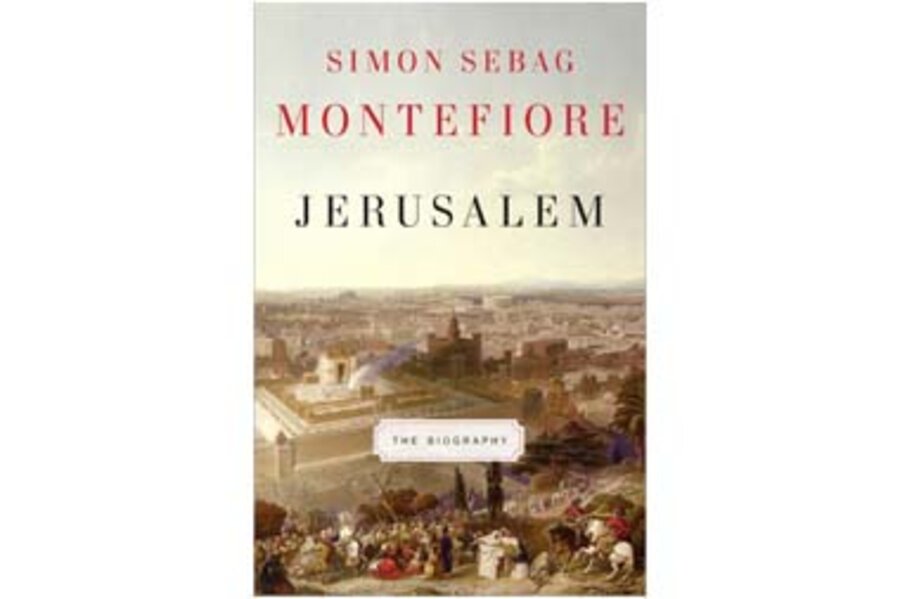Jerusalem: The Biography
Loading...
Jerusalem is one of the few places that has universally attracted the envious gaze of all varieties of the world’s people. In 1195, Pope Urban II spurred on the First Crusade, more than a bit peeved that the Holy Land remained firmly in Muslim hands under his Catholic watch. Centuries later, American readers turned “Innocents Abroad,” Mark Twain’s chronicle of his odyssey through Europe and the Middle East in which he pays a visit to the sacred city, into an overnight bestseller. Yet even the Western fascination with Jerusalem often paled in comparison to the fury with which the city’s nearby inhabitants routinely battled over territories, worship rights, and perceived slights by competing sides.
Simon Sebag Montefiore, himself the scion of a powerful Jewish family that figured prominently in the modern history of Jerusalem, tackles the violent and convoluted past of this important city in his book Jerusalem: The Biography. As he declares in the preface, Montefiore aims to, “write the history of Jerusalem in its broadest sense for general readers ... without a political agenda.”
Montefiore largely succeeds in remaining apolitical, freely criticizing the Jews, Muslims, and Christians of all eras who each managed to undertake more than their fair share of inadvisable, and often ghastly, punishments, reprisals, and persecutions. “Heads dashed against walls” and “wreaking a genocidal vengeance” are typical phrases from a work that does not for a page shy away from the bloody tales of a city that, ironically, has always purported to represent the opposite: divinity, salvation, and piety.
Among of the highlights of this narrative are the eccentric yet little-known characters who emerge in the colonial space between an enlarging Palestine and a declining British mandate. One of these figures is Orde Wingate, a British Army officer who had led a group of Arab irregulars to battle in Sudan. He arrived in Jerusalem in 1938 and began to train the Special Night Squads, collections of Jewish commandos who employed guerrilla warfare on their Arab adversaries. Wingate’s services were short-lived after Prime Minister Neville Chamberlain issued the White Paper of 1939, limiting Jewish immigration to Palestine and proposing an Arab homeland without creating a Jewish state.
Captain Monty Parker, a veteran of the Boer War and descendant of English aristocracy, is another one of Montefiore’s great finds. Convinced that he could unearth the Ark of the Covenant in a cave south of the Temple Mount, Parker raised money worldwide for his fruitless endeavor. His contentious excavations culminated in a hasty seaborne retreat. At his heels were angry Arab mobs, under the impression that Parker was fleeing to Europe in possession of the Holy Grail. Bertha Spafford, a founder of the evangelical American Colony, noted that, “the Parker fiasco came nearer to causing anti-Christian massacre than anything that happened during our long residence in Jerusalem.”
The adventures and misadventures by the likes of Parker and Wingate are welcome in an otherwise slapdash history of over three millennia condensed into just over 600 pages. Phrases like, “she struggled to control her sons:.... the high priest John Hyrcanus II was not energetic enough, while the younger Aristobulos was too energetic by far” provide little benefit to the general reader when they stand alone as the sole description of the Greek Queen Alexandra’s reign.
Montefiore’s ambitious project suffers at the outset as he desperately chronicles what appears to be every uprising, minor conflict, and mild misunderstanding that occurred in and around Jerusalem since time immemorial. Giving each little more than a sentence or two, it is easy to forget the countless names, dates and general point of the first two thirds of the work.
Thankfully, Montefiore’s writing achieves an entertaining tenor as the 19th century arrives, perhaps because his great uncle, Sir Moses Montefiore, figures so prominently in the land’s increasingly Jewish claims to ownership.
Montefiore’s biography ends abruptly following the Yom Kippur War, after which the author has honored his promise to remain politically neutral.
Although the genealogical trees and various maps that close out the book prove helpful, upon completion there is a bit of the feeling of having eaten a large meal too quickly. For some general readers, the book may feel too long. But for others, “Jerusalem: A Biography” will serve to incite curiousity and may feel more like a starting point.
As for me, my order for Wingate’s biography is already in.
Jackson Holahan regularly reviews books for the Monitor.






